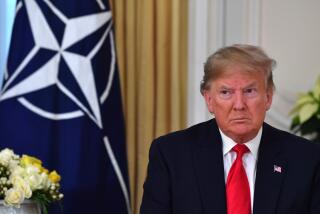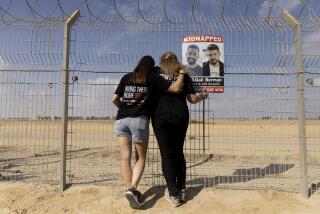The Doomsday Clock keeps ticking
The unleashed power of the atom has changed everything, save our modes of thinking, and thus we drift toward unparalleled catastrophe. -- Albert Einstein, 1946
Last week, on behalf of the Bulletin of the Atomic Scientists, I announced that the Doomsday Clock -- established in 1947 by scientists who had worked on the first atomic bomb in 1945 -- was to be moved back by one minute from its previous setting of five minutes to midnight -- five minutes to Doomsday. As of Jan. 14, it reads six minutes to midnight.
The Science and Security Board of the bulletin and its Board of Sponsors meet regularly to assess the changing global situation, and this is the 19th time the clock has been adjusted since its inception. It had last been reset in January 2007 and in 2002, following the events of 9/11. It was closest to midnight (two minutes) in 1953, when the United States and the Soviet Union tested thermonuclear weapons within six months of each other, and it was set farthest back in 1992, at 17 minutes to midnight, as the Soviet Union dissolved. A change of one minute now may not seem like much, and in fact this is the first time in the clock’s history that such a small shift has been made. But the subtext is significant.
For the first time since atomic bombs were dropped in 1945, leaders of nuclear weapons states are cooperating to vastly reduce their arsenals and secure all nuclear bomb-making material. President Obama has initiated new arms reduction talks with Russia and directed the U.S. government to lead a global effort to secure loose fissile material in four years. And for the first time ever, industrialized and developing countries alike are pledging to limit climate-changing gas emissions.
But good intentions and action are different things. Governments won’t find the political will to follow through unless the public demands it. For that to happen, scientists can’t just warn of impending doom; we have to dispel the misconceptions that make it easy for business-as-usual to persist.
Here are seven wrongheaded notions that keep the clock ticking:
The Cold War is over.
Russia and the U.S. possess more than 10,000 nuclear warheads, and what’s more, each country has perhaps 1,000 warheads on hair-trigger alert, ready to launch within 15 minutes of a perceived attack. This is a recipe for disaster and no longer has any strategic purpose, because the two superpowers are no longer basing their defense on mutually assured destruction.
The intractable rogue governments in Iran and North Korea are the chief drivers of nuclear proliferation.
In fact, violations by the U.S. and Russia of the 1970 Nuclear Nonproliferation Treaty have done more to spread nukes. The treaty requires the five nations acknowledged to have nuclear weapons -- primarily the U.S. and Russia -- to dramatically disarm. This has not occurred. Moreover, U.S. actions toward Pakistan and India -- non-signatories to the treaty -- simply encourage the nuclear arms race between those nations by providing plutonium reactors to Pakistan and engaging in separate nuclear agreements with India.
The United States would never again be first to use nuclear weapons against a civilian population.
The U.S. continues to reserve the right to use nuclear weapons first. There is no rational, moral, tactical or strategic purpose for the first use of nuclear weapons, and we need to recognize this fact in our strategic defense policy.
“Limited nuclear war” is, in fact, limited.
Recent studies have concluded that even a limited nuclear exchange between Pakistan and India, for example -- involving perhaps 100 warheads -- would significantly disrupt the global climate for at least a decade and would kick at least 5 million tons of smoke into the stratosphere.
We have a missile defense system to protect us against nuclear weapons.
Even before the most recent ballistic missile defense system was installed in eight silos in Alaska and California in 2004 and 2005, 50% of the U.S. public thought we already had such a system in place. They were about as correct then as they would be now. The system that has been installed has failed almost 50% of the time in tests, and even then the tests were not performed against a realistic threat. The evidence of global climate change is based on models and assumptions, not what is actually happening.
In fact, climate change is occurring now; it’s observable and measurable. The seas are becoming more acidic; sea levels are observed to be rising as predicted; continental ice sheets are shrinking at a faster rate than predicted.
There hasn’t been a nuclear attack in 65 years, which bodes well for the future.
The more nuclear weapons that nations possess, the greater the motivation for the nonnuclear nations to join the club. The more nations with weapons, the greater the chance one of them will use them, or lose them to terrorists that will.
Every little bit helps, but turning the Doomsday Clock back by one minute is cold comfort. We need to follow Einstein’s dictum and change our modes of thinking. It’s the only way we can stop the ticking once and for all.
Lawrence M. Krauss is co-chairman of the Board of Sponsors of the Bulletin of the Atomic Scientists. He is a professor at Arizona State University’s School of Earth and Space Exploration and its physics department, and is founding director of its Origins Project.






